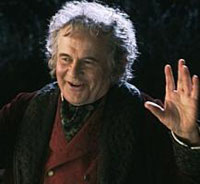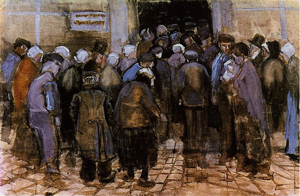
Source: People, Kenny Teo, Flickr
Sometimes writers don’t want their readers to worry about unreliable narrators or know anything about the outcome, so they choose to write in a third-person point of view. In a third-person POV, you don’t have to rely on the viewpoint of one character who is also involved in the action. In third-person POV, the action often seems to be happening in the moment, so the fate of the main character may seem less obvious.
Instead of using the pronouns I or me, third-person narrators use the pronouns he, she, it, him, his, her, hers, its, they, them, their, and theirs. You will learn about three types of third-person narrators—omniscient, limited, and objective—in this section and the next.
Third-person Omniscient
Let’s begin with the third-person narrator who knows the most, the omniscient narrator. The omni- prefix means “all,” and -scient means “knowing.” This godlike, third-person narrator is not part of the action but knows the thoughts and feelings of more than one of the characters. In contrast to the first-person narrator, who tells the story subjectively, this narrator can get into the heads of more than one character and present a more objective, or well-rounded, perspective.

Source: The_Hobbit_ An_Unexpected_Journey, Film_Poster, Flickr
In J.R.R.Tolkien’s epic tale, The Lord of the Rings, Hobbit Bilbo Baggins addresses the guests at his 111th birthday celebration. Tolkien’s omniscient narrator reveals what many of the guests are thinking as the old Hobbit talks.
They all feared that a song or some poetry was now imminent; and they were getting bored. Why couldn’t he stop talking and let them drink his health?
Bilbo announces his departure and disappears in a flash of blinding light, surprising all the guests but one, his nephew Frodo. We get yet another perspective when the omniscient narrator reveals Frodo’s feelings about Bilbo’s disappearance.

Source: Bilbo Baggins, Wikipedia
He had difficulty in keeping from laughter at the indignant surprise of the guests. But at the same time he felt deeply troubled: he realized suddenly that he loved the old hobbit dearly.
In addition to having the flexibility to probe into more than one character’s mind, third-person omniscient narrators can answer any question about the present, past, or future of the characters. If a writer wants to convey an event that occurred in the past, there’s no need to create some mechanism for a character to access the event. The omniscient narrator can move through time and across space effortlessly.
Third-person Objective

Source: Vincent van Gogh - The State Lottery Office (F970), Vincent Van Gogh, Wikimedia
At the opposite end of the spectrum of the omniscient narrator is the third-person objective narrator. Unlike the omniscient narrator who allows us access to the minds of many characters, the third-person objective POV does not allow us access to any characters’ thoughts or feelings. This POV is similar to watching a play or a movie in which we only observe what the characters do and say. Based on their actions and dialogue, you infer what characters are feeling and thinking.
The third-person objective is rarely used in short stories because one of the strengths of fiction is its ability to show characters’ thoughts. One classic short story that uses this POV, however, is “The Lottery” by Shirley Jackson.
A lottery is a drawing used to make an objective decision, one that does not subjectively favor one person over another. Read the following scene from the story. It’s as if you are viewing a group of people through the lens of a movie camera as they gather at the village square. Everyone is acting in uniformity.
Soon the men began to gather, surveying their own children, speaking of planting and rain, tractors and taxes. They stood together, away from the pile of stones in the corner, and their jokes were quiet and they smiled rather than laughed. The women, wearing faded house dresses and sweaters, came shortly after their menfolk. They greeted one another and exchanged bits of gossip as they went to join their husbands. Soon the women, standing by their husbands, began to call to their children, and the children came reluctantly, having to be called four or five times.
Click on the link to go to a podcast of “The Lottery” read in its entirety by writer A. M. Homes. Then play the audio that appears on the Web page. You might want to begin listening at the three-minute (3:00) mark. The story ends at the 21:45 interval.
 Now, using your notes, answer the questions below. When you’re finished, check your understanding to see possible responses.
Now, using your notes, answer the questions below. When you’re finished, check your understanding to see possible responses. - What is your reaction to the ending of this story?
- How do you think the objective POV contributes to the overall effect?
- The ending of the story is shocking.
- The third-person objective POV maximizes the dramatic effect in this story. We can guess from her apathetic expression and late arrival that Mrs. Hutchinson, who draws the fated slip of paper, is not very enthused about the lottery. If the story were told from her subjective point of view, the reader might have gotten some clues that would ruin the ending, but the third-person objective narrator relays the events in a deadpan manner, increasing our shock at the ending.